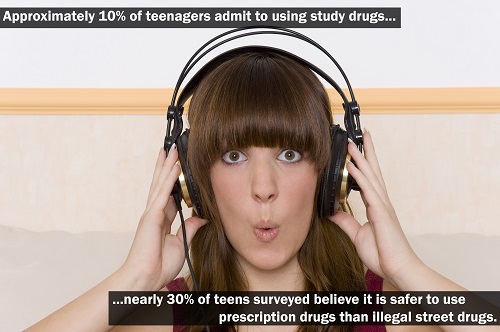Curbing drug use isn’t something that can be solely dealt with at a national level. Effective policies must be put in place on a global scale. In 2010, approximately 5 percent of people all over the world, or 230 million individuals, admitted to engaging in illegal drug use at least once.
 The United Nations Office on Drugs and Crime (UNODC) has been working since 1961 to control drug use in order to preserve public health and welfare. Each year, illegal drugs claim the lives of around 200,000 people. So many of these individuals might not have had to die had they received the help they needed.
The United Nations Office on Drugs and Crime (UNODC) has been working since 1961 to control drug use in order to preserve public health and welfare. Each year, illegal drugs claim the lives of around 200,000 people. So many of these individuals might not have had to die had they received the help they needed.
Since its inception, the organization has made an effort to combat this issue not only with law enforcement, but also with policies that would address the deeper core issues of health and addiction.
According to Reuters, the UNODC global drug conventions that took place in 1961, 1971 and 1988 have helped standardize the world’s drug regulation policies, reducing the proliferation of illegal drugs. In fact, even as the world’s population has continued to multiply over the last hundred years, global production of opium, for instance, has decreased by 80 percent.
Many individuals addicted to drugs are sick and do not belong in a prison with hardcore criminals. While there are those who would say that legalizing drugs is the answer to combat the international drug problem, proponents of the UNODC efforts say that current measures are working.
But for these measures to continue being effective, countries around the world must offer education, rehabilitation, and social reintegration programs to drug offenders rather than prison sentences. Receiving these individuals as patients instead of criminals presents the greatest opportunity for change so that everyone has the chance to lead a healthy life free from drugs and crime.
Drugs available in your backyard? Teens say drugs easy to get their hands on in New Mexico.
25 Jun 2013
Teens and ‘Study Drug’ Abuse
Teenagers have been pulling all-nighters and cramming for tests for as long as schools have existed. Maybe even you have pulled an all-nighter, fueled by nothing more than a 2-liter bottle of caffeinated soda and the fear of telling your parents you failed an important test. Today, however, many teens are turning to something a lot more powerful than Pepsi or Red Bull to help them stay awake while they study. They’re using other substances — the kind that can lead to a serious drug addiction — to fuel their academic endeavors.
Study Drugs
The stimulants typically used as “study drugs” are medications — the kind frequently prescribed for mental health conditions such as attention-deficit hyperactivity disorder (ADHD) and narcolepsy. In teenagers with a legitimate medical need like ADHD, these drugs have a counterbalancing effect on the brain. In essence, they help create a calmer state of mind that allows the teen to focus more readily. When used properly by those who need them, prescription stimulants are not addictive.
These same medicines, however, have a different effect on teens who don’t struggle with ADHD. They start using these medications — for example Ritalin, Concerta, Metadate, or Adderall — with the belief that they will sharpen their focus, boost their energy, help them stay alert, and / or enhance their school performance. While the drugs may provide bursts of energy and improve alertness temporarily, they also quickly create a vicious cycle — the cycle that can easily lead to drug addiction. With continued use, teens often find they need increasing amounts of the drugs to get the same effect, so they keep upping the dose. Eventually they become so dependent on the drug that they can’t function without it.
The drugs, which have street names like Vitamin R, college crack, or Addy, can be taken in their original pill or capsule form. Some teens will crush the pill or open the capsule to snort the drug directly into their system. Regardless of how they are taken, there is no evidence that study drugs boost academic performance in teens not diagnosed with ADHD.
A survey found that approximately 10% of teenagers admit to using study drugs. However, the same survey also revealed that only one in 100 parents believe their teen is using the drugs. The study also found that use was concentrated among white students, while African-American and Latino teens tended to use them less. The use of study drugs rises to as much as 35% in college students. In addition, nearly 30% of teens surveyed believe it is safer to use prescription drugs than illegal street drugs.
Access to Study Drugs
Teenagers can be very savvy when it comes to acquiring these drugs, particularly if they’ve become addicted to them or already struggle with a drug addiction. For example, some will game the health care system by learning the symptoms of ADHD. They convince their parents and doctor that they have the disorder, receiving a legal prescription that then allows them access to one of these study drugs. This method may also permit some adolescents to receive the medication under a parent’s health care plan. This allows them to get the drug without coming up with the money to purchase it themselves.
Another way teens access study drugs is by theft. Some will take advantage of a family member with ADHD, stealing from his or her supply of legitimately prescribed medications. Some teens will steal physicians’ prescription pads to write out their own authorization for the drugs.
Some teens will illegally purchase stimulant medications. For example, they may buy a few pills from a friend who has a legitimate prescription. In fact, research shows that one out of every three teens believes it’s OK to take medications that have not been prescribed to them.
 Why Teens Abuse Study Drugs
Why Teens Abuse Study Drugs
Teenagers face increasing pressure to succeed in school. Kids can be worried that if they don’t get good grades, they won’t be accepted into competitive colleges, won’t win needed grant or scholarship funds, or will become ineligible for high school or college sports. When health science researchers analyzed Twitter feeds for 6 months, they found that Adderall mentions spiked during typical finals periods. Mentions of the study drug were also higher mid-week and lower on the weekend. The findings suggest that students are talking about Adderall during the usual periods of academic stress.
Danger of Study Drug Addiction
Like any prescription medication, ADHD drugs have side effects — some of which are quite common with medications in general. Teens who take these drugs may experience stomach upset, sleep problems, decreased appetite, or daytime drowsiness. Long-term use can also slow height gain, with at least one expert reporting that a user might be as much as a quarter-inch shorter each year.
Study drug abuse has other side effects as well. For example, some individuals taking ADHD medications have reported heart problems. This can be an especially serious issue if an abuser lives with an undiagnosed heart condition. A teen might also develop tics, or repetitive motions, such as head jerking or excessive blinking.
Stimulants may also alter mood. This often occurs as the effects of the drug wear off. Sometimes referred to as the “rebound effect,” some teens may become very sensitive or more irritable. Others may appear to react differently than is normal for them. For example, they may appear to be sad even though they don’t feel sad. These types of side effects are more common in short-acting stimulants.
The abuse of study drugs can also mask the effects of alcohol. A teen using study drugs and drinking may not realize how intoxicated he’s become. He may binge drink because he doesn’t feel the effects of the alcohol. The combination of alcohol and stimulant medication can lead to dangerous situations that result in blackouts, alcohol poisoning, drunken driving and serious accidents and injuries. Approximately two out of three emergency room visits involving ADHD medications also involved at least one other substance, such as alcohol.
Warning Signs of Study Drug Abuse
- Altered mood or behavior, including irritability or intense mood swings
- Periods of sleeplessness
- Decreased appetite or weight loss
- Lapses in memory
- Dilated pupils
- Dry nose and mouth
- Secretive behavior, such as isolation or unexplained spending
What Parents Can Do
If you suspect your teen is abusing study drugs, seek professional help. An addiction specialist can help you come up with a plan to get your teen into rehab. Treatment will include a mental health assessment to identify other challenges your teen may be facing. For instance, he or she may have a co-occurring mental health condition, such as depression or anxiety, that is contributing to the addictive behavior.
Because study drug abuse is often triggered by a desire to perform well, therapy can teach your teen how to deal with stress and anxiety in a healthy manner. A therapist may introduce helpful relaxation techniques, such as breathing exercises or progressive muscle relaxation. Other recommended stress relief remedies may include physical activity, like regular exercise, or a creative outlet, such as journaling.
If your teen does not have ADHD and is abusing Adderall or other stimulant medications, it can lead to drug addiction. Talk with an addiction expert who’s experienced with treating adolescents. Your teenager’s life and well-being are worth more than his or her ability to excel in school.
Read More about Student Drug Abuse: College Student’s Death Sparks Renewed Warnings About the Dangers of Inhalants
17 Jun 2013
Molly – An Unsuspecting Name for a Potent Drug
Taking the good with the bad is a life lesson that everyone learns at some point. But young people involved in the rave culture are finding that drugs bringing on extremely intense feelings of pleasure have an equally displeasing depressing effect.
The drug, Molly, has a name that sounds innocent enough, but unsuspecting users are devastated by the crash they experience when coming off the high. In some cases, the depressing feelings lead to a near paralyzing state where the user can’t find the mental strength to eat or communicate.
The intense emotional ride and the relatively cheap cost of that ride are helping push the popularity of Molly further every day. The drug is actually the powder or crystal form of MDMA (AKA Ecstasy). The popular drug Ecstasy is actually derived from a variety of drugs, not just MDMA. Molly is a purer form of Ecstasy and actually gets its name from “molecule,” which is representative of its place as the vital ingredient to MDMA.
The DEA has classified Molly as a Schedule I controlled substance due to its addictive nature and because it has not been embraced by the medical community as having any usable characteristics in health care.
Users who take too much of the drug will have a difficult time with temperature regulation and can actually experience hyperthermia, which can lead to liver, cardiovascular and kidney failure.
The current statistics from emergency rooms across the nation don’t indicate that the use of this drug is widespread yet. But the massive growth in its popularity in such a short time has experts concerned – there was an approximate 125 percent growth in the use of the drug between 2004 and 2009.
Continue reading: Understanding the Effects of Substituted Amphetamines
Drug addiction is developed through a combination of biological and environmental factors. Each patient with an addiction represents a unique combination of factors that led to the condition. However, even if two individuals have identical environments, it does not guarantee that both individuals will have identical outcomes with addiction development.
A new study helps to explain why some individuals are able to use drugs, but do not develop an addiction. It also helps to explain why some patients are able to resist cravings after completing a substance abuse treatment program, while others experience relapse.
The study, conducted by researchers at the RIKEN Center for Molecular Imaging Science, located in Japan, and the Montreal Neurological Institute at McGill University in Canada, provides new information about brain circuitry that controls decision-making. The study finds that addiction may be linked to abnormal functions in the frontal cortex, the area that is responsible for decision-making.

The study’s findings are published in a recent issue of the journal Proceedings of the National Academy of Sciences of the USA. They show that the orbital and lateral regions of the brain, located in the frontal cortex, work together when cue related to drugs or craving is introduced. When those two areas of the brain do not work together well, addiction may be the result.
To examine this function of the brain, the researchers used a combination of tools, uniting functional magnetic resonance imaging (fMRI) with transcranial magnetic stimulation (TMS). The participants included 10 smokers, who were evaluated for cue-induced cravings and the resulting neural mechanisms. The researchers based this examination not only on cravings, but how the brain responds when drugs are not available, despite a craving.
The researchers found that among smokers the orbitofrontal cortex (OFC) was key in monitoring the level of craving and the dorsolateral prefrontal cortex (DPFC) evaluated drug cues and availability of the drug. The study demonstrated that the DPFC was able to suppress functions in the OFC if the cigarette was not available to the individual.
The study also tested the results of the DPFC being non-active using TMS and found that cravings and the related signals occurring in the OFC were not related to drug availability.
With these findings, the researchers conclude that the DPFC is central to functions of drug cues and evaluating drug availability and then works with the OFC where the information from the DPFC is used to determine whether drug-seeking behaviors will follow.
The authors of the study explain that in their smoker participants, after evaluating the drug cues and availability status in the DFPC, the cravings accumulated in the OFC. The authors found the results interesting, given that the neural circuits involved are central to decision-making and self-control, but normally guide an individual to making the most beneficial decision.
There are many research studies out there trying to understand drug addiction. Read Drug Addiction ‘Turned Off’ With Lasers to see another take on addiction recovery.
When people are afraid to get on an airplane, friends may comfort them by saying that many more people die in motor vehicle accidents than in airplane crashes. It seems incomprehensible to think that someone could say, “And even more people die by suicide.” But according to the Centers for Disease Control and Prevention (CDC), that is, in fact, the case.
In a recent issue of the CDCs Morbidity and Mortality Weekly Report, the number of people who died in motor vehicle accidents in 2010 was listed at 33,687, while the number of people who committed suicide was 38,364. Researchers noted that the majority of Americans taking their own lives were in the baby boomer generation. Economic problems, easier accessibility to opioids and stresses caused by care-giving are just some of the suspected causes of the suicide increase in this generation.
Suicide rates climbed most alarmingly in the baby boomer generation. In the 10-year study period, women in their 60s had a 60 percent increase in suicides (eight per 100,000) while men in their 50s had a 50 percent increase (27 per 100,000).

Researchers speculate on multiple reasons for the spike in the suicide rate. Baby boomers are arriving at reflective ages where some of them are not satisfied with where they are in their life. Life’s pressures and problems seem to prove too much for some.
Multiple problems and pressures may be pushing the American suicide rate higher. Financial loss or strain is just one possible reason for a feeling of hopelessness that may lead to suicide. Researchers believe that other problems may be caused by the overuse and easy accessibility of prescription painkillers. Opioid addiction is also rising in this country.
Being a caregiver for an aging parent while also taking care of a child who has returned home after college can also take a toll on boomer parents. While that age group is supporting family both older and younger than themselves, who is supporting them?
CDC representatives stress that the suicide rate may decline if more prevention programs and support is offered to those at risk for suicide. Sometimes it is not just one of the above mentioned problems or pressures—it is a combination. These complex reasons can be better sorted out with the guidance of professionals
Not only should at-risk individuals be helped, but so should those who have lost a loved one to suicide. Support groups to help those survivors can help the next generation learn to live through the pain and not give up hope in their own lives.
Read More About Opioid Abuse And Suicide Risks
03 Jun 2013
Is the Entertainment Industry to Blame for Drug and Alcohol Problems of Former Child Stars?
If you are like me, you have probably wondered why so many former child television, movie, and music stars have ended up addicted to drugs and alcohol, and just in general are living lives marked by excessive levels of melodrama and notoriety.
From Judy Garland in Hollywood’s Golden Age to contemporary figures such as Michael Jackson, Macaulay Culkin, Britney Spears, and Lindsay Lohan, there are innumerable case histories of individuals who found success on the stage, screen, and in the recording studio at tender ages only to be plagued by bouts with substance abuse and mental and emotional breakdown as they advanced into adulthood. Given how frequent and awful the stories of tragedy have been, it would be difficult not to draw the conclusion that there is something inherently traumatic about great success in the entertainment industry that causes talented young people who make it to the big time to eventually lose their way.
This is indeed an easy conclusion to draw, but that does not make it the correct one. There is no question that what young people who reach stardom at early ages experience is something far removed from normal or routine, and it may very well be that so much public scrutiny and attention so early in life does have an impact on impressionable minds that is not altogether positive. But for the sake of balance and perspective, it must be acknowledged that there have been scores of people who found success in the entertainment business who grow up to be happy, normal, successful and extremely well-adjusted people.
 So for example, while Judy Garland’s experiences with substance abuse have received much attention over the decades, we would be remiss if we did not note that the life of her contemporary, (and the most famous child star the world has ever seen), Shirley Temple, went in an entirely different direction. Temple eventually left the motion picture business and entered the world of international politics, where she helped blaze trails for women everywhere by securing appointments as a U.N. representative and the U.S. ambassador to Ghana and Czechoslovakia. And what is one to make of the career of Ron Howard, who began working steadily as an actor at the age of 6 and went on to become one of the most successful directors in the business and by all accounts a completely sober and level-headed guy? And what about all the formerly young stars who rose to prominence right alongside the notorious guys and gals we have all grown to know so well (Lindsay, Britney, Charlie Sheen, etc.) whose names have never once appeared in the tabloid press because they were busted for a DUI or forced to enter a rehab center?
So for example, while Judy Garland’s experiences with substance abuse have received much attention over the decades, we would be remiss if we did not note that the life of her contemporary, (and the most famous child star the world has ever seen), Shirley Temple, went in an entirely different direction. Temple eventually left the motion picture business and entered the world of international politics, where she helped blaze trails for women everywhere by securing appointments as a U.N. representative and the U.S. ambassador to Ghana and Czechoslovakia. And what is one to make of the career of Ron Howard, who began working steadily as an actor at the age of 6 and went on to become one of the most successful directors in the business and by all accounts a completely sober and level-headed guy? And what about all the formerly young stars who rose to prominence right alongside the notorious guys and gals we have all grown to know so well (Lindsay, Britney, Charlie Sheen, etc.) whose names have never once appeared in the tabloid press because they were busted for a DUI or forced to enter a rehab center?
There are countless examples of former child television, movie, or music stars who have gone on to lead admirable and entirely sane lives. And even among those who have run into trouble, there are many like Drew Barrymore who have been able to bounce back and apparently recover from their substance abuse issues. If we were to take a comprehensive survey, we would most likely discover that these stories of normalcy and triumph outnumber the scandalous tales and stunted life histories of Hollywood’s irredeemable bad boys and girls by a significant margin, but of course people aren’t really interested in hearing about all of the child stars who didn’t end up dead, addicted, or on the skids as adults.
This is not to suggest that there is no problem here. Insiders agree that the drug culture is alive and well in both Hollywood and the music industry and that levels of drug abuse and alcohol consumption are higher among celebrities than among the general public. But just because a certain type of temptation exists does not mean that all who are exposed to it will succumb even if they have been involved with those cultures from an early age, and the fact that so many don’t would tend to suggest that when grown child stars end up addicted and corrupted, there is a lot more going on than meets the eye.
When Parents Don’t Parent, Kids Don’t Grow Up
Rather than blaming the entertainment industry, we need to take a much closer look at the parents of these lost souls, who chose to expose their kids to the public eye during a potentially fragile stage of their lives. Many of the stars who have had the most trouble were actually pushed into the industry by moms and dads who were in it for the money or who wanted to bask in the glory of having famous sons or daughters. Judy Garland, Lindsay Lohan, Gary Coleman, Tatum O’Neal and Michael Jackson are just a few examples of troubled former child stars whose parents seem to have been more interested in fame and fortune than they were in the welfare of their children. In fact, it is quite rare to find former child stars who became addicted to drugs or alcohol later in life who would testify that they came from safe, secure and loving homes. On the other hand, young entertainers who grew up in stable homes with parents who always watched out for their interests and never pushed them to do anything they weren’t ready for are the ones who, for the most part, have seemed to do just fine after reaching maturity.
And that is the key word – maturity. So many of the child stars who have struggled as adults (Michael Jackson is the most obvious example here) never really grew up. Because their lives were so abnormal and distorted, they were never able to make the transition from adolescence to adulthood, and this “failure to launch,” to use a colloquial term, is what left them vulnerable to the dangerous temptations that the entertainment culture offers so readily. Immaturity and insecurity go hand-in-hand, which explains why Hollywood and the music industry attract so many people who lust after fame and fortune because they believe that getting people to pay attention to them and notice them is the one and only thing that can fill up the empty spaces in their souls. And what makes the situation so difficult for many former child stars is that they were taught to think and feel this way from an early age by parents who were projecting their own immaturity onto their helpless offspring.
Lights, Camera, Destruction!
 Behind the glitz, glamour, and money, Hollywood and the music industry share a dark side, and intensive involvement in this world may not be good for the minds, bodies, and spirits of vulnerable people who are in no position emotionally or psychologically to avoid all the potential pitfalls. The former child stars whose moms and dads pushed them toward the bright lights instead of allowing them to find their own passions undoubtedly carry many scars, and the bouts with substance abuse that so many have experienced is a direct reflection of this parental neglect and abandonment (lets call it what it is, kids forced to live out their parents’ dreams were most assuredly neglected and abandoned).
Behind the glitz, glamour, and money, Hollywood and the music industry share a dark side, and intensive involvement in this world may not be good for the minds, bodies, and spirits of vulnerable people who are in no position emotionally or psychologically to avoid all the potential pitfalls. The former child stars whose moms and dads pushed them toward the bright lights instead of allowing them to find their own passions undoubtedly carry many scars, and the bouts with substance abuse that so many have experienced is a direct reflection of this parental neglect and abandonment (lets call it what it is, kids forced to live out their parents’ dreams were most assuredly neglected and abandoned).
Celebrity itself is not to blame for the problem behavior of famous people, but the fact that so many seek fame with such hunger and desperation, as if it were the only thing that mattered, is a sign of deep-seated psychological and emotional immaturity. Child stars all too often are the victims of such misguided ambitions, rooted in the subconscious of their caregivers, and this is why it is hardly surprising that so many eventually fall into the greedy, grasping clutches of drugs and alcohol. Fame and fortune cannot replace parental love and support, and those who attain the former without the latter are almost inevitably headed for disaster—and the cameras will be right there to capture every moment of the action once it finally arrives.
More Hollywood News about Addiction: Colin Farrell: On Overcoming Addiction To Booze And Drugs
30 May 2013
Do Some Businesses “Reward” Drug Abuse?
An article in the Australian Business Review Weekly tells the story of “Ruth,” a high finance worker in Sydney who left her job because she wanted to stop snorting cocaine. According to her story—which was told to an Australian rehabilitation worker—substance abuse was a 24-hour habit in her business, with executives constantly sneaking off to the bathroom for a pick-me-up.
Substance abuse specialist Josette Freeman argues that it isn’t unusual in that sort of industry, claiming that meetings over wine and dinner with clients often descend into cocaine-taking, and even that the high stress and production-focused businesses essentially reward drug abuse by ignoring the issue if it benefits them. In the United States, it’s estimated that business owners lose $100 billion per year as a result of drug abuse—and the facts about its impacts don’t paint the sort of picture these businesses might imagine.
“Benefits” for Businesses
According to the US Department of Health and Human Services, in 2009 77 percent of illegal drug users had either part time or full time jobs. Given the high rates of substance abuse amongst lawyers, it seems reasonable to assume that other high-level professions will also be affected.

If you place yourself into the shoes of a business-owner or other employer (with a limited capacity for foresight), you can see that there are several superficial benefits to a drug-using workforce. Most drugs don’t even have these, but stimulants like cocaine generally increase alertness, help people stay awake, improve mental performance and reduce appetite. If you think coldly and callously, as if you’re only interested in making a profit, these effects are big plus-points for stimulant use in the workplace. You feel like you’ll get an active, focused and dedicated work-force, willing to pull long hours and with an almost constantly positive morale.
According to Josette Freeman—whose work for drug rehabilitation group SMART has put her in contact with many white-collar addicts—“there are a lot of workplaces where they don’t care too much about the workers if they are producing.” This is at least echoed in the legal profession in the US, where the problem is often ignored and allowed to continue.
Risk Factors for Workplace Drug Abuse
There are numerous different elements which can make workplace substance abuse more likely. A particularly important one is stress (which will be addressed in detail later) but many other factors such as long or irregular shifts, tiredness, repetitive duties, isolation, ease of access to substances, lack of supervision and low job satisfaction are also notable risk factors. Some of these (such as stress, tiredness and long hours) would typically be more likely to affect higher-level workers, but others (such as repetitive duties and low job satisfaction) are a particular concern for blue-collar workers. Regardless of the specific risk factors, most jobs evidently carry some inherent risk of substance abuse.
The Importance of Stress
Stress is a key factor when it comes to any type of substance abuse, and this is particularly relevant for high-level professions that carry a lot of responsibility. The mechanism by which stress contributes to addictive behavior has also been studied, but it’s important to understand that stress only creates a susceptibility to addiction. It all depends on how individuals deal with the stresses of the workplace. Healthy coping mechanisms that don’t rely on substances enable most workers to manage stress without relying on substances as a mood-elevator. However, not everybody has these coping mechanisms.
For individuals with less healthy stress management strategies, a high-stress job in the financial or legal industries can easily lead them down the road to substance abuse. As mentioned in the previous section, this is particularly likely if there is easy access to substances in the workplace. This means that if there is a “culture” of drug abuse in the office, anybody exposed to high levels of stress is especially likely to get sucked in. To truly combat the issue of workplace substance abuse, employees have to be taught healthy coping mechanisms and about the long-term effects of drug abuse in the workplace.
The Truth of the Matter
As you may expect, workplace drug abuse—which may have an initial appeal to some employers and employees—ultimately reduces productivity, increases the number of absences, and makes regular changes in employer even more likely. Even stimulants, which initially seem like productivity-drugs, can cause panic, aggression, suicidal thoughts, paranoia, and hallucinations in chronic (long-term) users. On top of this, stimulant users ordinarily binge and then “crash” in a period of little activity characterized by depression, anxiety, and cravings.
Workplaces need to remain vigilant against drug abuse, and it’s advisable to have a policy in place for dealing with workplace substance abuse. In addition to educational programs to increase awareness, it’s important for employers to provide access to treatment and support. Businesses should also be clear about testing protocols and commit to disciplinary action where required. It’s a problem that spans all workplaces, and all businesses must take steps to protect against it.
Read more about The Dangers of Recreational Drug Use Here
The problem of inhalant abuse has surfaced again in a recent story from California, where nitrous oxide abuse is linked to the death of a college student. According to the Substance Abuse and Mental Health Services Administration (SAMHSA), over 1 million Americans abuse inhalants each year, and they’re keen to point out that the problem is far from confined to adolescents. In the wake of the incident, law-makers in California are looking at implementing new legislation and raising awareness to reduce the numbers of needless deaths from inhalant abuse. However, the strategy appears to be geared toward young people, when national research has shown that the majority of inhalant admissions are actually from adults.
The Recent Death
Nineteen-year-old Claremont McKenna College student Ali Mirza was found with nitrous oxide canisters, or “whippets,” in his dorm room when he died. He was rushed to Pomona Valley Hospital Medical Centre, after paramedics failed to revive him at the scene of the incident last month. He was pronounced dead at 2am on May 17th, and his funeral is scheduled for the June 15th. His family and friends will mourn his untimely passing, but the increased efforts of police officers and law officials to combat inhalant abuse may prove to have positive consequences for LA’s youth.
The Dangers of Inhalants
“Inhalants” is actually a fairly broad term to describe drugs that are “huffed” by users and many different substances could fall under the group. These include paint, marker pens, glue, air freshener, butane and substances like nitrous oxide. Despite the large number of substances used, most of them have similar effects to anesthetics and carry numerous potential risks. The most widespread (being a possibility with all inhalants) is sudden sniffing death syndrome, which basically results from a disturbance to the heart’s natural rhythm and is often fatal. Inhalants can also cause brain cell death, lung damage, short-term memory loss, and liver and kidney damage.
Nitrous oxide balloons (commonly known as “laughing gas”), in particular, pose a problem because the effect of a single “high” only lasts for five minutes or less. This means that users will generally repeat doses in a single evening of use, and this multiplies the potential for damage. When the user is “huffing,” he is depriving himself of oxygen, and repeated oxygen deprivation can lead to unconsciousness or—over time—brain damage.
The Response
The problem of inhalant abuse has been on the rise among California youths, according to Veronica De Alba (a deputy city attorney in LA), and this has led her to push for increased legislation to protect California adolescents. Police in the area are working on an ongoing 15-month investigation – entitled “Operation No Laughing Matter” – to curb the usage and availability of nitrous oxide. This has dramatically reduced the supply of the drug in the LA County area, but a continued effort is evidently required to prevent resurgence in usage down the line.
 Not Just Teens
Not Just Teens
Research from SAMHSA has shown that adults actually make up the majority of admissions to treatment facilities for inhalant abuse. The study showed that out of all admissions to treatment facilities for inhalant abuse, 54 percent were from people aged 18 or over in 2008. Admittedly, the majority of these admissions (52 percent) were from those in the 18 to 29 age group, but it still calls the adolescent focus of recent efforts into question.
While there is obviously a problem with inhalant abuse among teens, the problem is far from confined to them, and any public health-focused responses should take this into account. The sad truth is that inhalant abuse, like all drug abuse, may be commonly associated with troublesome youths, but it’s actually common in people from all walks of life. Some similar assumptions, which may be made about the race of inhalant abusers, were also addressed by the study and the results showed that the majority of the admissions were white males.
Broadening the Scope of Prevention and Education
Public awareness of the dangers of huffing will undoubtedly be improved by the recent story, but it’s important that you don’t mentally file it way as something that only really affects young people. The negative health impacts of huffing don’t discriminate based on age—they can affect any user—and research seems to show that adults are actually more likely to be heavy huffers. Broadening the scope of inhalant awareness campaigns to also appeal to adults initially seems like an unnecessary step, but statistics tell us that it’s just as vital as targeting teens and young adults.


